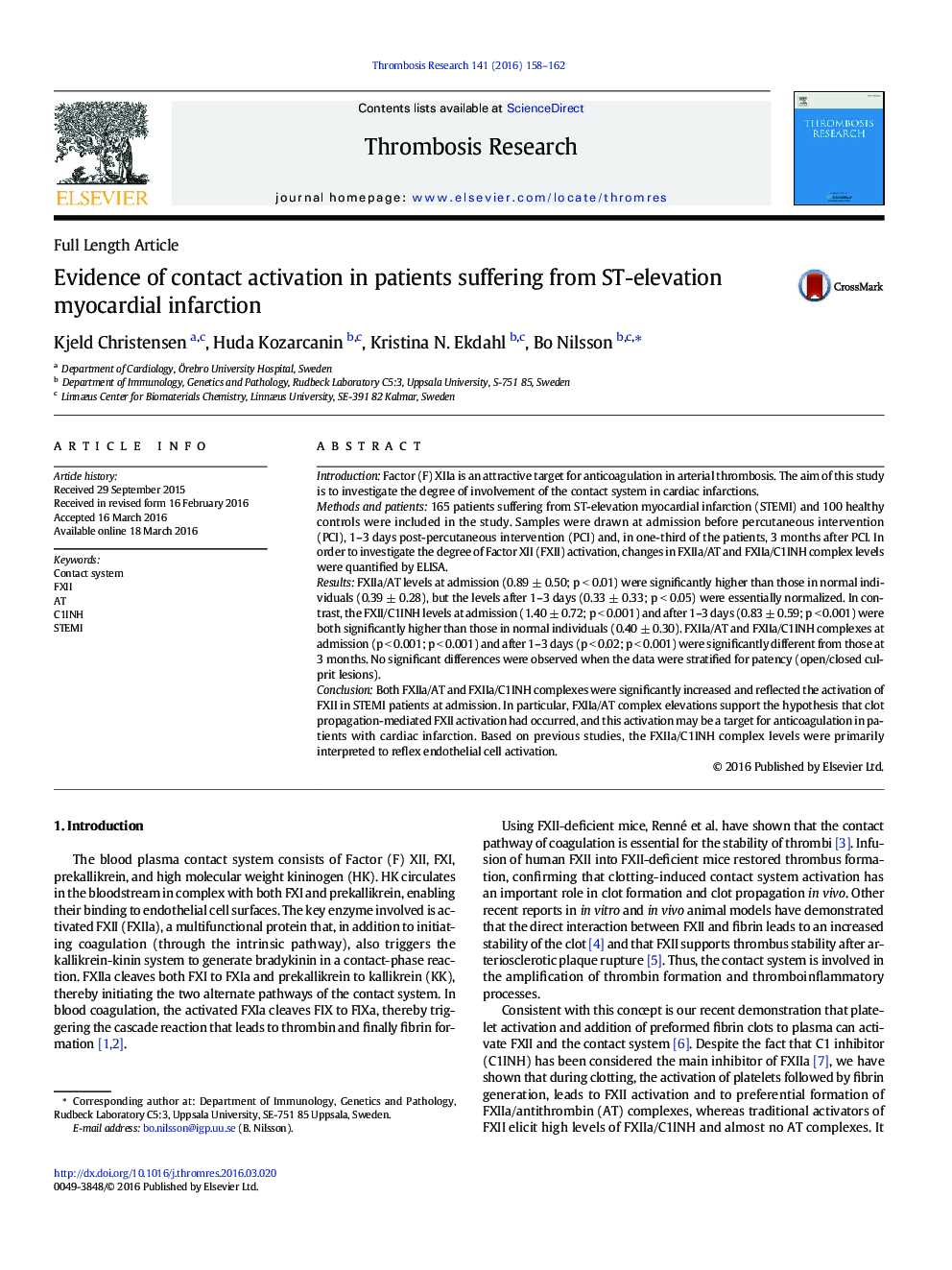| کد مقاله | کد نشریه | سال انتشار | مقاله انگلیسی | نسخه تمام متن |
|---|---|---|---|---|
| 6000453 | 1579202 | 2016 | 5 صفحه PDF | دانلود رایگان |

- New assays for quantification of FXII activation have been developed.
- FXII activation was assessed in patients with myocardial infarction.
- The results show that contact (FXII) activation occurs in these patients.
IntroductionFactor (F) XIIa is an attractive target for anticoagulation in arterial thrombosis. The aim of this study is to investigate the degree of involvement of the contact system in cardiac infarctions.Methods and patients165 patients suffering from ST-elevation myocardial infarction (STEMI) and 100 healthy controls were included in the study. Samples were drawn at admission before percutaneous intervention (PCI), 1-3 days post-percutaneous intervention (PCI) and, in one-third of the patients, 3 months after PCI. In order to investigate the degree of Factor XII (FXII) activation, changes in FXIIa/AT and FXIIa/C1INH complex levels were quantified by ELISA.ResultsFXIIa/AT levels at admission (0.89 ± 0.50; p < 0.01) were significantly higher than those in normal individuals (0.39 ± 0.28), but the levels after 1-3 days (0.33 ± 0.33; p < 0.05) were essentially normalized. In contrast, the FXII/C1INH levels at admission (1.40 ± 0.72; p < 0.001) and after 1-3 days (0.83 ± 0.59; p < 0.001) were both significantly higher than those in normal individuals (0.40 ± 0.30). FXIIa/AT and FXIIa/C1INH complexes at admission (p < 0.001; p < 0.001) and after 1-3 days (p < 0.02; p < 0.001) were significantly different from those at 3 months. No significant differences were observed when the data were stratified for patency (open/closed culprit lesions).ConclusionBoth FXIIa/AT and FXIIa/C1INH complexes were significantly increased and reflected the activation of FXII in STEMI patients at admission. In particular, FXIIa/AT complex elevations support the hypothesis that clot propagation-mediated FXII activation had occurred, and this activation may be a target for anticoagulation in patients with cardiac infarction. Based on previous studies, the FXIIa/C1INH complex levels were primarily interpreted to reflex endothelial cell activation.
Journal: Thrombosis Research - Volume 141, May 2016, Pages 158-162